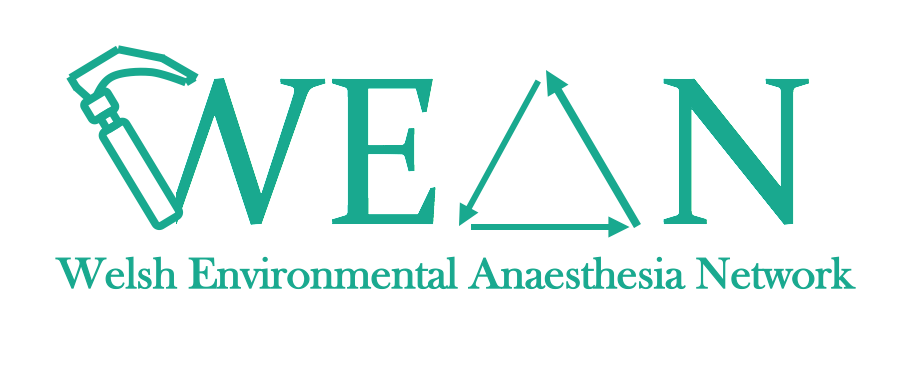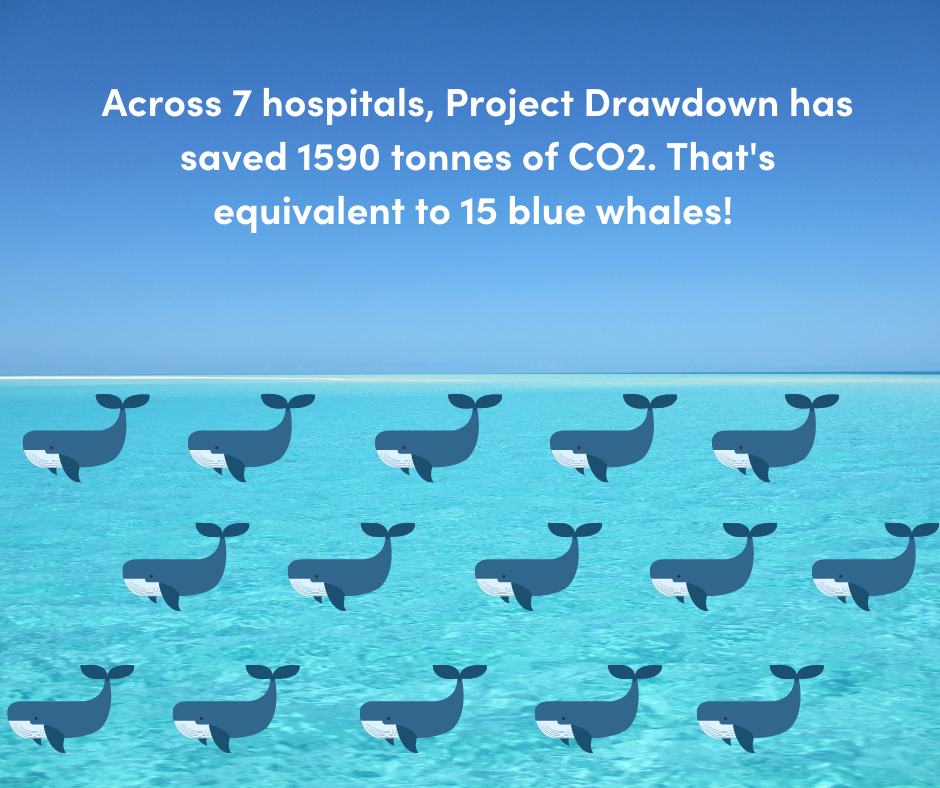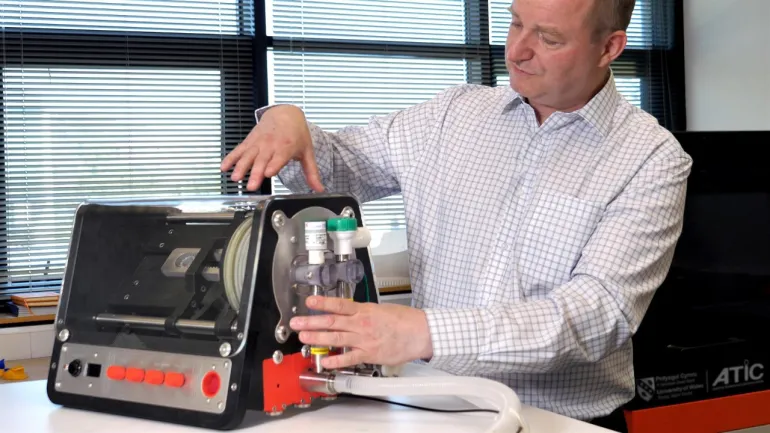Since the climate crisis is a global health threat, health boards are now tasked with thinking about the negative health impacts of the care being delivered to patients in order to make the NHS sustainable for future generations.

“Climate change is the biggest global health threat of the 21st century”, The Lancet 2009.
The Association of Anaesthetists (AoA) encourages its members to consider the environmental impact of their clinical practice. Anaesthetic gases (inhalational anaesthesia) account for 5% of carbon dioxide equivalent (CO2e) emissions of acute NHS trusts, with desflurane accounting for 80% of this. Anaesthetic gases are scavenged from the theatre environment but then vented off the rooftops of hospitals unregulated. Desflurane is an anaesthetic gas used in patients undergoing surgery which had has a climate change impact 2,540 times worse than carbon dioxide.
There are a number of anaesthetic gases which anaesthetists can use, bu it is possible to avoid gases by using Total Intravenous Anaesthesia (TIVA). The emission footprint of TIVA is significantly smaller than gases.
During September 2018, Cardiff & Vale University Health Board (CAV UHB) set up Project Drawdown to engage and educate anaesthetic staff about the climate impact of the anaesthetic gases they use. Their goal was to see if by education alone they could instigate a change in practice and reduce the climate impact of their clinical care. Relying only on engagement and education, they saw a 50% reduction in their CO2e from anaesthetic gases used in theatres in CAV UHB.

Accelerate's involvement
With the help of Accelerate they hosted a Sustainable Anaesthesia Innovation Conference in June 2019 where an engaged audience learnt about Sustainability in Quality Improvement (SusQI)3. Out of this conference ‘The Welsh Environmental Anaesthetic Network’ (WEAN) was established.
WEAN is coordinating a multicentre, grassroots initiative Project Drawdown, aiming to reduce the CO2e emissions of inhalational anaesthetics by 80% across Wales by 2021. So far 11/18 acute hospital in Wales have removed the Desflurane vaporisers from their anaesthetic machines.
Data from just 7/18 acute hospitals so far extrapolates to a staggering 1.59Kton CO2e savings. This corresponds to 26,291 tree seedlings grown for 10 years to sequester this amount of carbon dioxide.
2 years on from starting Project Drawdown in CAV UHB, they have managed to reduce our CO2e from the inhalational gases (Sevoflurane, Desflurane and Isoflurane) by over 85% and saving costs of approximately £80,000 a year. They were able to spend half of what they saved from the first year of the project, and the anaesthetic department has been able to purchase a further 30 specialised TIVA pumps, which means TIVA can now be a first-choice method of delivering general anaesthesia at CAV UHB.
Find out more about the Accelerate Programme.
This project is part of the Accelerate programme which is part-funded by the European Regional Development fund, through Welsh Government.



